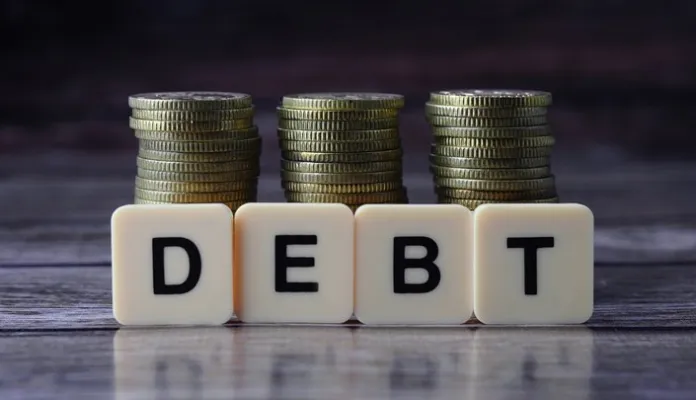Despite the positive strides in addressing external debt concerns, questions linger over the timelines and ambitious objectives associated with commercial debt relief. Notably, efforts to restructure the country’s external debt have generated mixed reactions from market observers both locally and internationally,
Government is pushing for an agreement in principle on the official debt treatment by early November 2023. This move is timed to align with approval of the country’s International Monetary Fund (IMF) Extended Credit Facility’s first review, but experts are divided over whether these goals are feasible.
GCB Capital, in its review of the latest investor update from the Ministry of Finance, expressed concerns about the ambitious targets. “While the progress with external debt treatment is promising, the proposed timelines and targetted gains from commercial debt appear ambitious.”
According to the Ministry of Finance’s investor update, government has presented various scenarios to the Official Creditor Committee (OCC) and Paris Club secretariat. These scenarios aim to pave the way for an agreement in principle, followed by a memorandum of understanding (MoU) formalising the debt treatment agreement.
Government’s proposal includes an ambitious 30 percent to 40 percent haircut on commercial debt, which has raised eyebrows among investors. Finance Minister Ken Ofori-Atta, who presented the scenarios, outlined a comprehensive plan that not only included substantial debt reduction but also sought to cap coupon rates at 5 percent and restrict final maturities to 20 years on bonds which would be issued as part of the reworking for US$13billion of outstanding international debt.
Mr. Ofori-Atta, in defending the proposal said: “The scenarios have been carefully considered and are really meant to facilitate productive discussions. We expect these treatment terms to be consistent with the IMF’s classification of our debt as sustainable”.
Market analysts however remain cautious about the likelihood of bondholders accepting such substantial haircuts. Reuters reported that the proposal’s ultimate recovery value will be significantly lower compared to historical averages. Morgan Stanley calculated a recovery value of US$38, contrasting with the current average price of US$44 on the bonds.
Several experts, including those cited by Reuters, expressed reservations about the proposed 30 percent to 40 percent haircuts – comparing them to Greece’s 60-70 percent haircuts in present value (PV), which were described as excessive and unjustified.
One potential solution under consideration is the inclusion of value recovery instruments (VRIs) that link payouts to variables such as gross domestic product growth. Analysts believe these instruments could improve the overall outcome for bondholders. Nevertheless, some argue that meaningful write-offs are necessary to bring about a substantial difference in the debt restructuring process.
Ghana is not alone in its debt restructuring efforts. The country, along with Zambia and Ethiopia, is participating in the G20 Common Framework programme that aims to assist poor nations grappling with overwhelming public debt burdens. However, this programme has faced criticism for its slow progress.
Finance Minister Ofori-Atta underscored the importance of successfully completing the external debt restructuring exercise, highlighting its critical role in restoring economic stability. He also acknowledged progress made in the domestic debt exchange programme, describing it as a turning point in the economy’s recovery.
“The successful completion of an external debt restructuring exercise is crucial for Ghana,” Mr. Ofori-Atta stated.
He stressed that reaching an agreement with bilateral creditors was paramount for IMF board approval, noting the Official Creditors Committee (OCC) commitment under the G20 common framework, co-chaired by France and China, to provide financial assurances for the IMF programme.
The minister expressed hope that all parties will reciprocate government’s commitment and join in the effort to restore economic stability.
The debt restructuring operation’s primary objective is to reduce the country’s debt-to-GDP ratio to less than 55 percent by 2028 – down from 89% at the close of 2022. This programme also aims at lowering the external debt service to revenue ratio to below 18 percent starting in 2028, compared to 28 percent in 2022. Additionally, it seeks to ensure that there are no gaps in external financing during the programme period; all while reducing government debt from 109 percent to 72 percent of GDP by 2028.
The domestic debt exchange programme’s (DDEP) successful completion is expected to provide government with additional financial space by reducing coupon rates and lengthening maturities. Ofori-Atta expressed gratitude for the widespread participation in these exchanges, and clarified that the DDEP will not be reopened.
Ghana’s domestic debt restructuring has been positively received internationally, as it signals authorities’ commitment to addressing the current debt crisis collaboratively. As negotiations with commercial creditors continue, it remains to be seen whether government’s ambitious debt relief targets will be achieved and accepted by bondholders.










